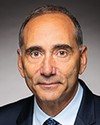Thank you, Mr. Chairman.
Members of Parliament, Chief Dominique, fellow witnesses, good morning.
Thank you for taking the time to focus on the very important issue of the woodland caribou, whose recovery we strongly desire, but also on the effects on companies like ours, on our communities and, more broadly, on the population of Quebec and Canada.
Chantiers Chibougamau is a family business founded in 1961. Our organization is made up of 1,500 men and women. Our job is to cut down trees and process them into building materials, kraft pulp and renewable energy, thereby decarbonizing infrastructure and construction and replacing single-use plastics. That's why we get up in the morning and work in the forest to process forest resources.
These 1,500 men and women collectively earn $150 million annually. A few dozen forest engineers and biologists are included in this number. They contribute to enhancing the competence that guides what we do and how we do it. They abide by codes of ethics and professional conduct, and they demonstrate our unquestionable commitment to issues as sensitive and complex as woodland caribou.
We've been talking about woodland caribou for 15 or 20 years. We document the subject, we undertake actions, we add them up, we revise them and we raise them when the need to do so is demonstrated. Regrettably, when the discussion reaches the public, it is too often polarized on the basis of a rather simplistic paradigm that lacks sensitivity to our contemporary reality. Indeed, forest industry jobs are pitted against caribou and biodiversity, whereas the two go hand in hand.
If our own practices, at Chibougamau, La Sarre, Landrienne, Béarn and Lebel-sur-Quévillon, aren't adequate when it comes to fighting climate change and protecting biodiversity, our customers won't want our materials. We have a corporate social responsibility, which is becoming a collective responsibility, of course, as your work on the subject has demonstrated.
We welcome the work done by your committee last week, which broadened the focus on the implementation of the decree as presented today. Issues surrounding the forest's life cycle are fundamental. When customers call us to buy our solid wood beams and columns, the first thing they ask about is our products' carbon footprint. It is therefore essential to look at these issues and the impact of implementing the decree on protecting the woodland caribou.
I also want to talk about the impact of our products on people. Kraft pulp from the Lebel-sur-Quévillon mill, which depends in particular on the trees that may or may not be available in the Val-d'Or sector, feeds processing operations nearby, in Gatineau, to make the sanitary paper needed by the population. It also feeds operations in central Ontario to produce sanitary paper products that are delivered to hospitals. The production of this fibre therefore has a domino effect that goes far beyond our company and our communities, and it's the most pragmatic and environmentally friendly response to meeting people's needs that we're now discussing, along with the implementation of such measures.
Headlines are often sensational. They suggest that the more we restrict the processing of trees and access to forest land by forestry companies, the better our conscience will be when it comes to biodiversity. I'm going to take the liberty of dwelling in a concrete and applied way on the facts relating to the Val-d'Or herd, which, let's not forget, has gone from around 55 individuals half a century ago to 9 today. Is this a cause for celebration? Not at all, it represents a failure. The 9 individuals of the Val-d'Or herd live on a territory of 14 hectares, which represents 25% of the surface area of Montreal's Olympic Park.
In Quebec, there's a protected area project that, on its own, calls for the removal of 43,000 hectares of forest from processing around the Val-d'Or herd enclosure. Since 2013, there has therefore been a moratorium covering these 43,000 hectares, and we are scrupulously respecting it. This number represents 1.2 times the surface area of the city of Montreal, while the 9 individuals of the Val-d'Or herd live, let's recall, on a territory that corresponds to a quarter of the surface area of Olympic Park.
Today, the proposed decree aims to remove 297,000 hectares of forest from processing. So, for the 9 individuals who live on a territory equivalent to 25% of the Olympic Park's surface area, the decree proposes to withdraw from processing an area eight times larger than that of the city of Montreal. We subscribe to the need to act, but that clearly gives rise to important questions.
What would the compensation costs be if we withdrew processing activities from certain areas?
We could reinvest elsewhere to generate this material and meet needs in the best possible way. How much would that cost?
What would the timeline be?
I think these are very important aspects to consider in terms of what is being discussed today.










